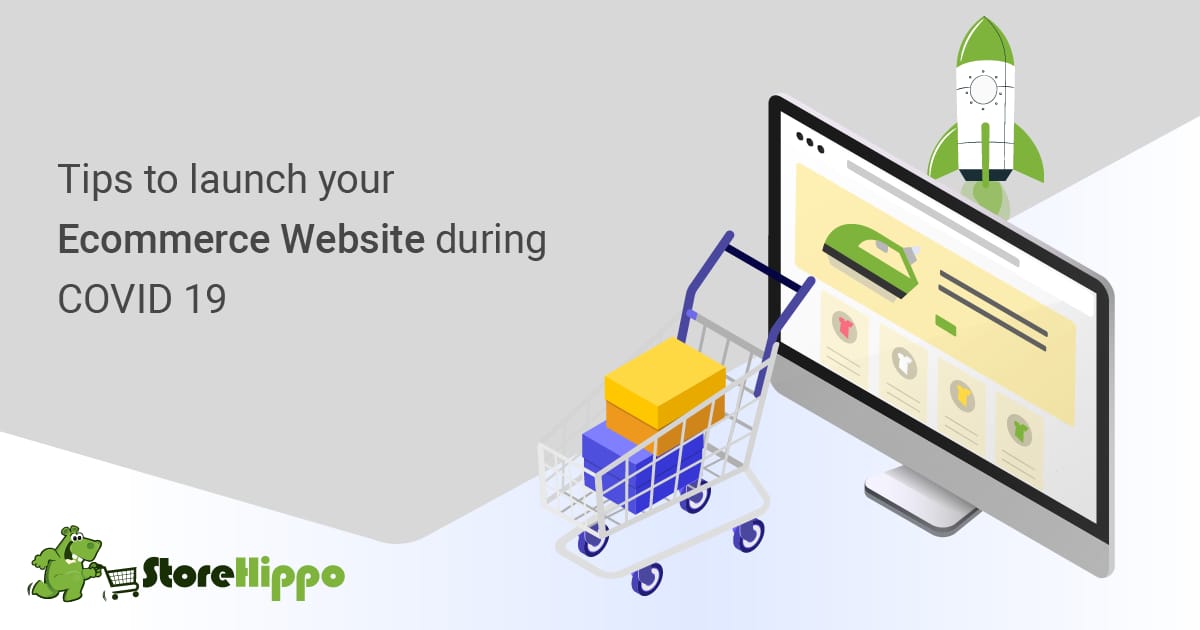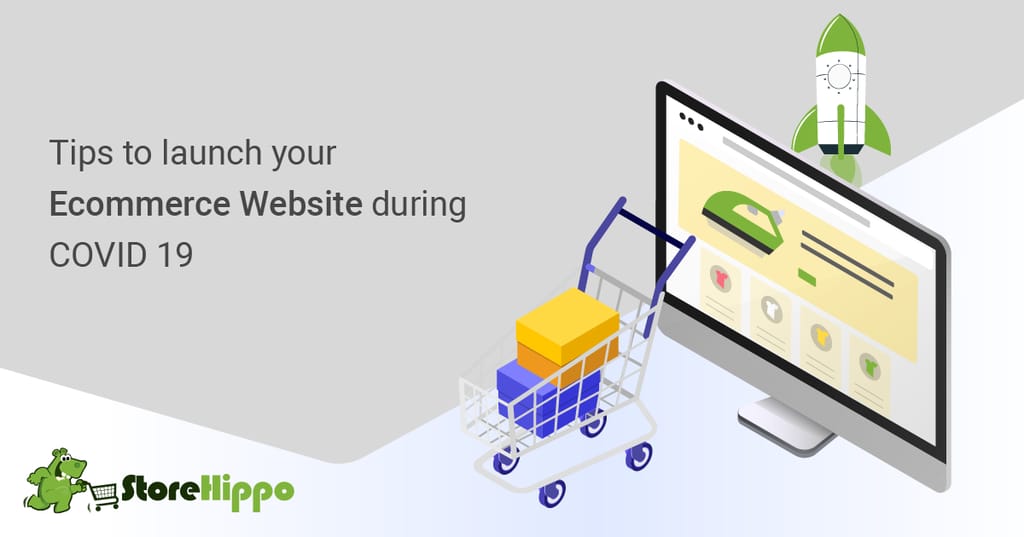Are you a shop owner? If yes, has your business been affected by the coronavirus outbreak? Chances are that you’ve shut your store permanently or it is attracting a very low number of customers. But if this is the case, where are people going for their shopping needs?
Well, the answer is the internet. People are going to ecommerce websites for almost all their needs, be it groceries, electronics, medicines or apparel. People of all demographics have started shopping online, and most will continue shopping online after the pandemic is over. The ecommerce market is on a boom.
For any shop owner or an aspiring entrepreneur, this is the perfect time to launch an ecommerce website and start an online business. It is not only a great business opportunity, it is also a crucial step towards becoming future-ready.
Now, we know that setting up a store may sound like a tricky business. Looking for some help to get started?
Here is a detailed guide on how to launch a start an ecommerce business and where to find the top ecommerce platform for it:
1. Choose a product
The first step to starting an ecommerce business is deciding what you want to sell. It could be a product that you have great knowledge and passion about, an evergreen product that will never go out of demand, or a trending product. Here’s how you can select what you want to sell-
i. Select a niche for the product you want to sell. Shortlist one or two products belonging to that niche that you might want to put up on your ecommerce website.
ii. Research to validate the product ideas based on:
- Price & Profit Margin – Choose a product that is not too expensive to manufacture or obtain and check that it offers a good profit margin.
- Local availability & Demand – Check if the product is available locally to map the demand for the product in different regions.
- Passion – You should care about the product. In future, that will help you come up with innovative solutions that will boost your business.
- Shipping – Choose a product that can be shipped without hassles and at low costs. Check with the top ecommerce platforms to know if they provide logistics-related services for the product you have chosen.
- You can even conduct surveys to check how the product would be received by the customers and make any changes if required.
iii. Finalise a product based on the research and your capabilities.
2. Write a business plan
People tend to underestimate the importance of writing a business plan, but it is in fact the most important step of planning any business. Whether it is an ecommerce website or an offline flower shop, every business needs a business plan.
A business plan contains details like your business objective/description, target audience, competitive analysis, marketing strategies, funding details, etc. It helps you have a clear vision, a plan, and solutions for all the hiccups you might face in the process.
3. Find a manufacturer/supplier and shipping partner
Once you have decided what you want to sell and have made a business plan for your website, the next step is to decide how to obtain the product you want to sell.
- If you are planning to sell your own product on your ecommerce website, look for manufacturers of that product.
- If you are selling an already existing product, you can look for wholesale suppliers on the internet.
- Alternatively, become a part of groups, forums, and other professional networks and make relevant contacts.
- If nothing else seems to work, try to find contacts offline.
4. Set up Business
- Pick up an attractive and easy name for your business.
- Register a domain name. Try to keep it simple and unique, and try to include a relevant keyword.
- Choose an ecommerce platform to set up your store. StoreHippo the top ecommerce platform can help create your online store in no time!
- Register for your 14-day free trial using your email ID and get started in a few clicks.
- Set up your website – Add company details, logo, products and product details, payment methods, shipping information, etc
- Get a sales tax registration. Get the required licences and permissions.
- Choose your subscription plan, pay for it and get started by testing and taking your online store live.
5. Bring traffic and attract customers
After you have set up your store, the next thing to do is attract customers and drive traffic to your ecommerce website. Few tools you can use for that are:
SEO – StoreHippo is an SEO-friendly platform that allows you to create unique URLs, meta titles, meta descriptions, etc. easily. Use microdata to make your website more readable to search engines, browsers, and crawlers. With features like SPA, MEAN stack, global CDN, and offline caching, you get a high performing site loved by crawlers as well as your customers.
Social Media – Social media has definitely turned out to be one of the best spaces for targeting specific audiences. Top ecommerce platform StoreHippo helps you use social media for generating leads and keeping the customers engaged. You can integrate with any social media channel and use it for sharing updates and news about your website.
Paid Advertising – You can also use paid ads to generate leads for your store. These ads usually occur at the top of the SERP results when you search a keyword and have high chances of being clicked upon.
6. Using analytics to get insights
After the business launch, it is important to get insights into the number of people reached, understand where the traffic on your ecommerce website is coming from, etc. Based on these insights, you can plan your business and marketing strategies for the future.
StoreHippo provides inbuilt analytics tools to help you understand what is working for the website and what is not. Get insights about top customers, top selling products, and top-selling brands. Plus, get performance comparison reports for particular dates, months or years. You can use these insights to decide which products and practices to continue and which to eliminate in order to become a top ecommerce platform.
Get reports on online payment vs COD payment, understand your customers’ payment preferences, and use this data to redefine your business strategies.
You can also get category-wise and collection-wise performance reports to know what is hit on your website and what is not.
Further, StoreHippo allows you to integrate your website with Google Analytics tools and make the best of the insights.
Table of Contents
Conclusion
The spread of COVID 19 has changed the way people look at shopping. With this step by step guide on how to launch your ecommerce website, you can start your business in no time and change the way you sell. Partner with StoreHippo and say goodbye to your worries. This platform is easy to use, can be customised inside out, and offers a plethora of tools and features to help your store stand out from the rest. So, start your free trial now and get started right away.





















Leave A Comment